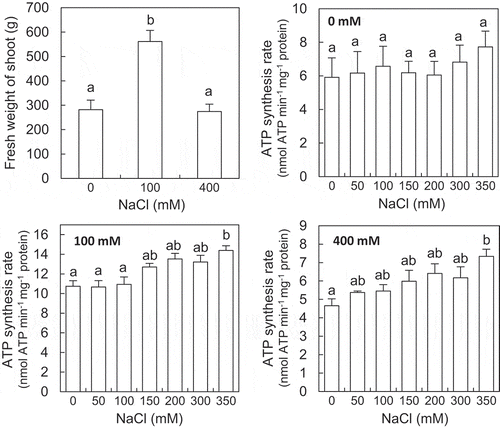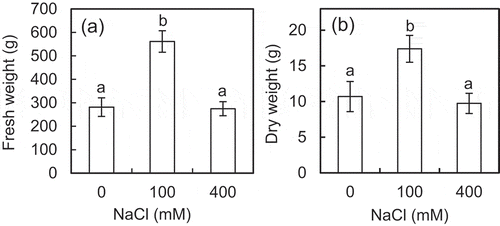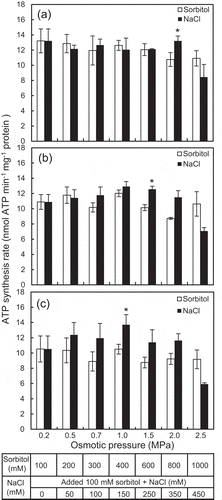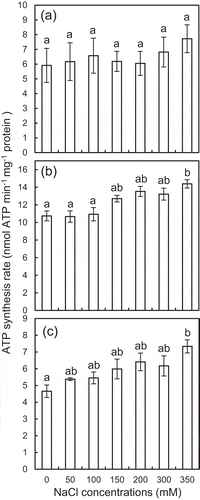Figures & data

Figure 1. Effects of NaCl on the growth of shoots of the ice plant. The fresh weight (a) and dry weight (b) of shoots were observed at 6 weeks after the onset of treatments. Data are mean values ± standard deviations (n = 10). Different letters indicate statistically significant differences among NaCl treatments by Turkey–Kramer test (p < 0.05).

Figure 2. Effects of NaCl and sorbitol on ATP synthesis rate of isolated mitochondria in assay mixtures. The mitochondria were isolated from leaves of the ice plants grown without (a) and with 100 mM (b) and 400 mM NaCl (c). The table below indicates the used amounts of NaCl and sorbitol for generating isosmotic pressures (0.2–2.5 MPa) in the assay mixtures. Data are mean values ± standard errors (n = 3). Asterisks indicate statistically significant differences in the values between the sorbitol and NaCl treatment at the same osmotic pressure by Student’s t-test (p < 0.05).

Figure 3. Effects of NaCl on ATP synthesis rate of the isolated mitochondria in the assay mixtures. The mitochondria were isolated from leaves of the ice plants grown without (a) and with 100 mM (b) and 400 mM NaCl (c). The osmotic pressure of the assay mixtures was fixed at 2.0 MPa with sorbitol. Data are mean values ± standard errors (n = 3). Different letters indicate statistically significant differences among NaCl treatments by Turkey–Kramer test (p < 0.05).
